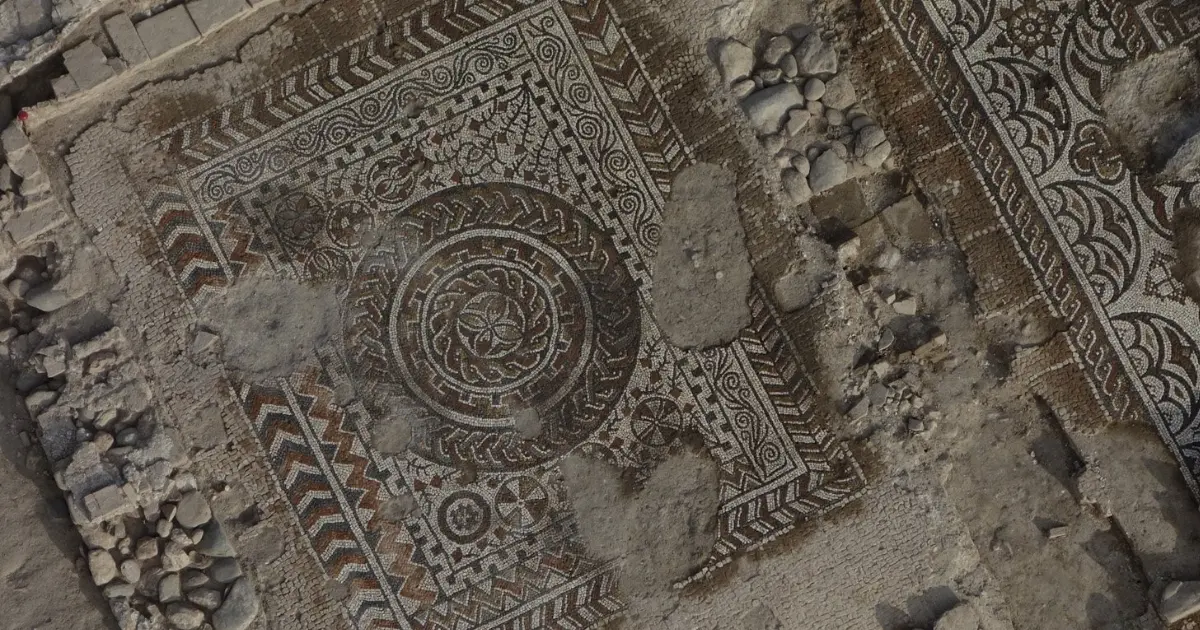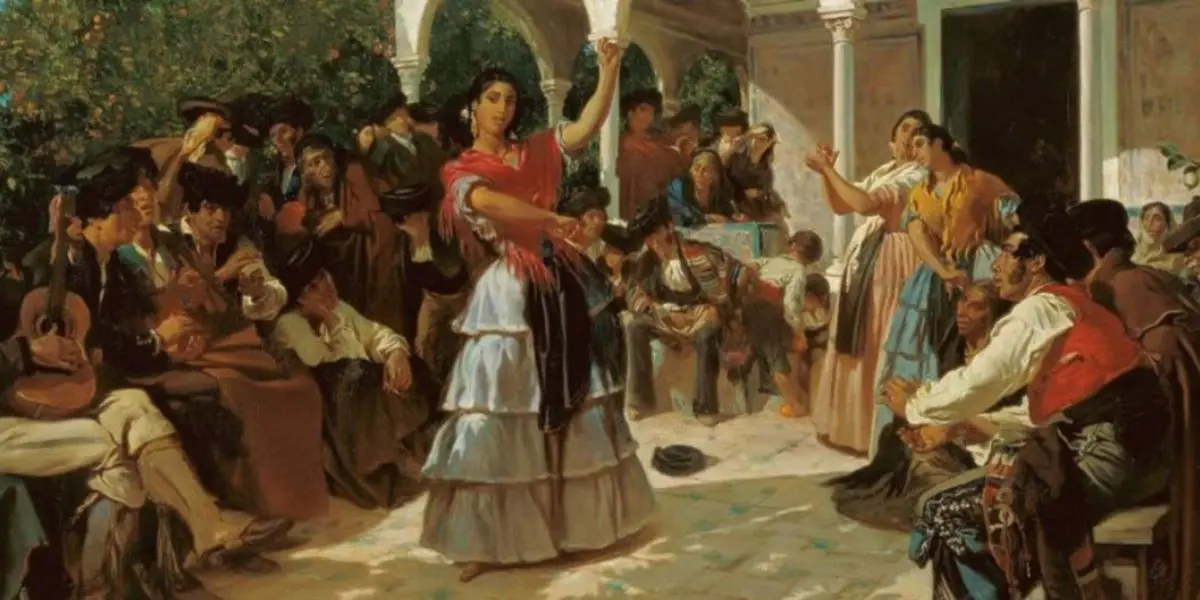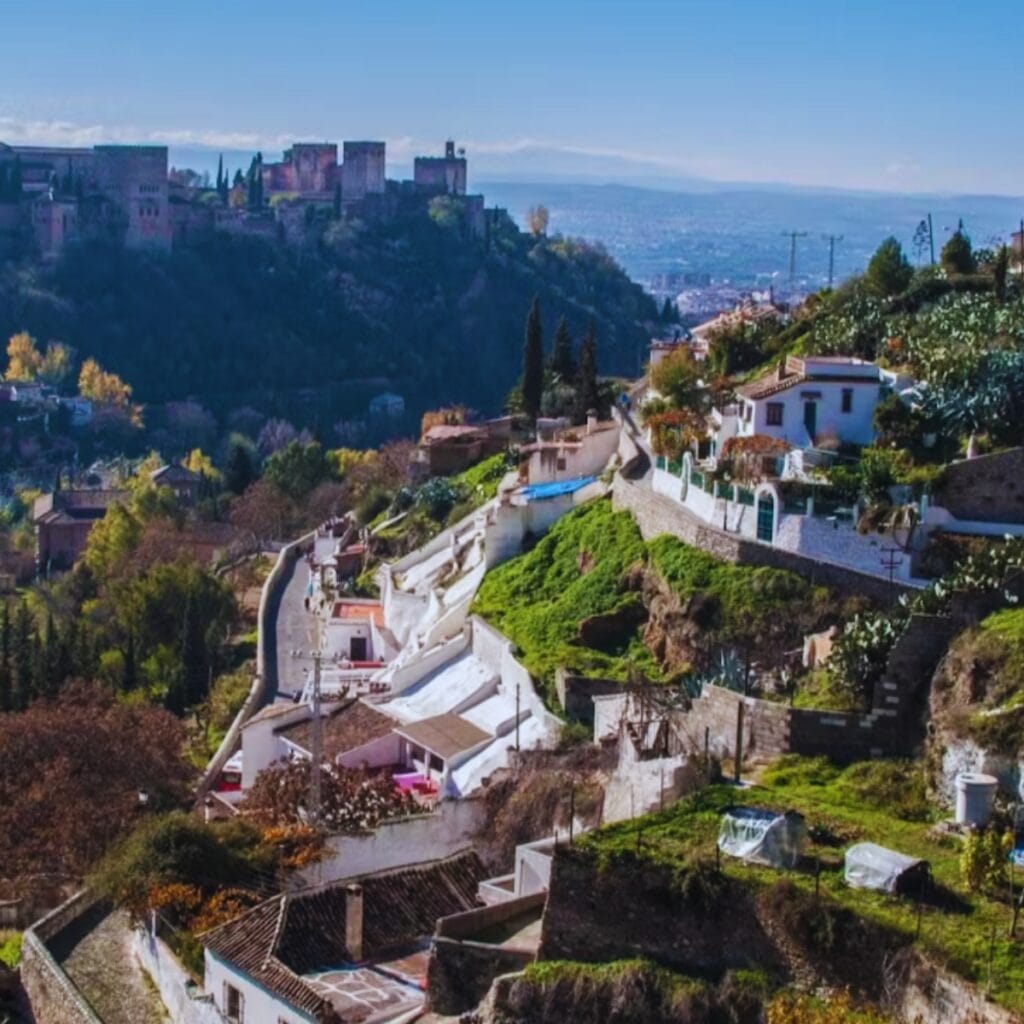History of Sacromonte: From Its Millennial Origins to Modernity
Sacromonte, whose name comes from the Latin “Sacrum Mons” meaning “Sacred Mount”, is a hill located next to the Alhambra and is today one of the most iconic neighborhoods of Granada. It is characterized by housing the famous “caves of Sacromonte” and for having a strong Gypsy tradition.
However, Sacromonte has a very deep and complex history, difficult to summarize but which we will attempt to in this post.
We will take a journey from ancient times to the present day, highlighting the cultural and social relevance it has had during different eras.
Sacromonte, its Geological and Prehistoric Origins
Sacromonte is located on the northern slope of the Valparaíso hill, owing its physical uniqueness to its geological formation.
This area is specifically distinguished by a series of hills of sedimentary and volcanic origin, naturally giving rise to the creation of cavities and caves that have served as housing and shelter for various human settlements throughout history.
The Prehistoric Settlement
There is considerable evidence that as early as prehistory, there were human settlements in this area. Stone tools and other objects related to the Paleolithic and Neolithic periods were found in its vicinity.
Although no remains as ancient were found in the caves of Sacromonte itself, the fact that there were vestiges of these eras in those areas leads historians to determine that the caves were inhabited by humans for tens of thousands of years.
Sacromonte in the Roman and Visigothic Era

Granada was known as Ilíberis during the Roman era, and later was called Eliberri, being an important center of Hispania Baetica.
Sacromonte, although not very important in Roman urban planning, had its relevance as an area of agricultural activity and may have also been used as a quarry to obtain materials.
With the fall of the Roman Empire and the arrival of the Visigothic Kingdom, the area underwent social and political changes, but there is no direct evidence that Sacromonte could have been an important center during this stage.
Sacromonte and the Nasrid Era in the 13th-15th Centuries
Sacromonte began to gain prominence during the Nasrid era, at the time when Granada became the capital of the last Muslim kingdom on the Iberian Peninsula.
Due to the cavities that Sacromonte offers, they served as dwellings and cisterns for the Arabs who lived in that era.

During the 13th and 14th centuries, Sacromonte was part of the periphery of the walled Muslim city and was used for livestock and agricultural activities as well as a recreational area.
The Gypsy Sacromonte – the Christian Conquest (1492-1600)
When the Nasrid kingdom fell to the Catholic Monarchs in the year 1492, Isabella and Ferdinand began a process of repopulation and transformation of Granada.

Connection Between Gypsies and Sacromonte
In the 16th century, it became the meeting point between the Gypsies and Granada. They came from various parts of Europe and the Iberian Peninsula, and began settling in the marginal areas of Sacromonte. These caves served as a refuge for the Gypsies and they made them their home. Therefore, the transformation of Sacromonte as a Gypsy neighborhood gradually took place and it was associated with a socially and economically marginalized area.
Sacromonte and the Legend of the Lead Books (17th Century)
One of the most important stories linked to Sacromonte is connected to the appearance of the so-called “Lead Books of Sacromonte”, documents that were apparently discovered in caves in the neighborhood in the 17th century, and which contained narratives related to the Christian history of Granada and its martyrs.
The Legend of the Martyrs of Sacromonte
The books would tell the stories of groups of Christian martyrs who were already living in Granada before the arrival of the Muslims and who were taking refuge in the caves of Sacromonte. To this day, it is unknown whether these books were created and falsified in the Baroque era for religious purposes, but the legend persists.
And it’s because Granada is linked to many legends that further accentuate the mystical and sacred touch that the city already has on its own.
In fact, this legend had quite an influence when creating the Sacromonte Abbey and in the transformation of the neighborhood as an environment that emanates identity and religious worship.
The Abbey of Sacromonte and the Christian Religion (17th Century Onwards)
The Abbey of Sacromonte was built in the 17th century and was a Benedictine monastery.
It was one of the most emblematic places in the city on a cultural and religious level, and around this abbey, festivals and processions were held, consolidating a very important Christian identity in the area.

The abbey was responsible for preserving the memory of the martyrs and the so-called “lead books”, strengthening the sacred touch of the area and becoming an important point for pilgrimages and tourism.
Sacromonte, the Cradle of Flamenco – 18th and 19th Centuries
The relationship between flamenco and Sacromonte began in the 16th and 17th centuries when the expulsion of the Moriscos and the arrival of Gypsy communities took place, who settled in the caves.
For a long time, marginalized populations, Moriscos, Gypsies, Christians, and Jews coexisted in the caves, giving rise to a unique cultural blend.
The Zambra and Sacromonte
The Moriscos, in their wedding celebrations, performed zambras. The word “zambra” comes from the Arabic “zamra”, which means “music” or “party with dance”. These zambras had a very characteristic melody, rhythm, and vocal ornamentation.
The Gypsies gradually added touches of this music and dance style, giving them their personal touch and creating a unique and exclusive musical and cultural style: flamenco.
The Gypsy zambras were social gatherings among Gypsies, charged with emotions where they celebrated life, love, pain, and freedom through singing and dancing

Caves as Flamenco Tablaos
Little by little, these celebrations held in the caves of Sacromonte began to have a great impact on society, being acclaimed by tourists from all over the world and enthusiasts of flamenco in Granada. This period was key to consolidating the relationship between flamenco and Sacromonte.
Its image was established as a festive, traditional neighborhood, an icon of flamenco culture.
20th Century: Urban and Social Transformations
In the 20th century, Sacromonte underwent significant changes. This was mainly due to a series of urban policies and the modernization of Granada city, which structurally affected this legendary neighborhood.

Urbanization and Tourism
Today, Sacromonte has become a very important tourist attraction in Granada. In fact, visitors are drawn by its magic and charm, seeking to visit the caves and witness an authentic flamenco show in them. The caves have been transformed into “flamenco tablaos”, and many of them have been converted into tourist accommodations, bars, restaurants, and cultural spaces.
Social Issues
Although there was an increase in tourism in this neighborhood, it continued to face problems of poverty and social marginalization. The living conditions in many of the caves were not entirely suitable for a good quality of life for their inhabitants, and social segregation remained quite pronounced.
Sacromonte Today: Heritage, Culture, and Responsible Tourism
In the 21st century, projects have been created to preserve Sacromonte and protect it at both urban and cultural-social levels.
Protection of Heritage and Cultural Development
Various public and private institutions have created projects to preserve the caves, the Abbey, and other monuments, making Sacromonte a living cultural environment highly focused on responsible tourism.
Festivals and Events
Currently, those who come to Granada want to immerse themselves in the well-known zambras of Sacromonte, such as the Zambra Festival, which keep pure flamenco and gypsy tradition alive, captivating thousands of tourists each year.
Sacromonte is not just a picturesque neighborhood of Granada: it has a unique history, forged among caves, legends, spirituality, music, and resilience. Those who visit take a piece of history and flamenco art in their hearts.

